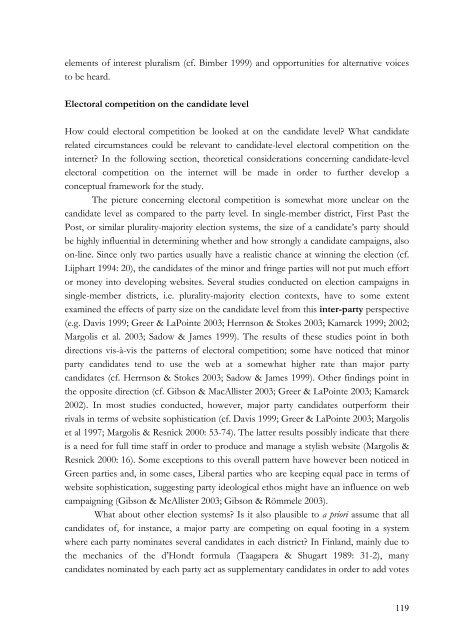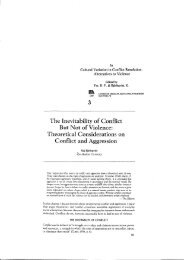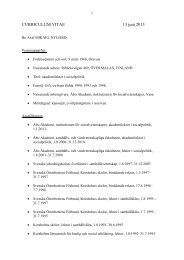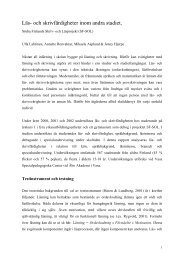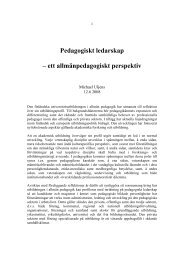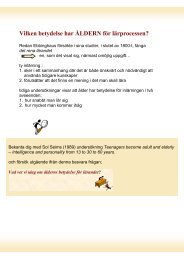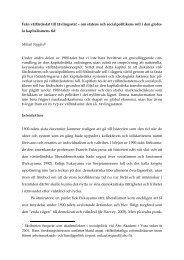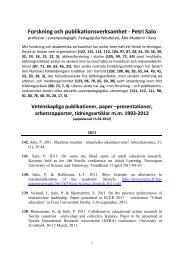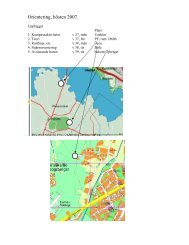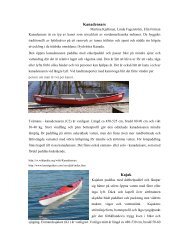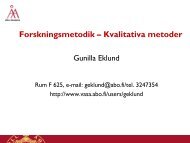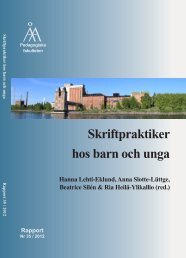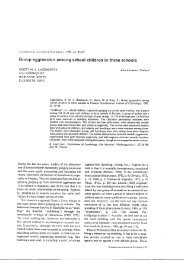Parties, Candidates and Citizens On-Line - Åbo Akademi
Parties, Candidates and Citizens On-Line - Åbo Akademi
Parties, Candidates and Citizens On-Line - Åbo Akademi
You also want an ePaper? Increase the reach of your titles
YUMPU automatically turns print PDFs into web optimized ePapers that Google loves.
elements of interest pluralism (cf. Bimber 1999) <strong>and</strong> opportunities for alternative voices<br />
to be heard.<br />
Electoral competition on the c<strong>and</strong>idate level<br />
How could electoral competition be looked at on the c<strong>and</strong>idate level? What c<strong>and</strong>idate<br />
related circumstances could be relevant to c<strong>and</strong>idate-level electoral competition on the<br />
internet? In the following section, theoretical considerations concerning c<strong>and</strong>idate-level<br />
electoral competition on the internet will be made in order to further develop a<br />
conceptual framework for the study.<br />
The picture concerning electoral competition is somewhat more unclear on the<br />
c<strong>and</strong>idate level as compared to the party level. In single-member district, First Past the<br />
Post, or similar plurality-majority election systems, the size of a c<strong>and</strong>idate’s party should<br />
be highly influential in determining whether <strong>and</strong> how strongly a c<strong>and</strong>idate campaigns, also<br />
on-line. Since only two parties usually have a realistic chance at winning the election (cf.<br />
Lijphart 1994: 20), the c<strong>and</strong>idates of the minor <strong>and</strong> fringe parties will not put much effort<br />
or money into developing websites. Several studies conducted on election campaigns in<br />
single-member districts, i.e. plurality-majority election contexts, have to some extent<br />
examined the effects of party size on the c<strong>and</strong>idate level from this inter-party perspective<br />
(e.g. Davis 1999; Greer & LaPointe 2003; Herrnson & Stokes 2003; Kamarck 1999; 2002;<br />
Margolis et al. 2003; Sadow & James 1999). The results of these studies point in both<br />
directions vis-à-vis the patterns of electoral competition; some have noticed that minor<br />
party c<strong>and</strong>idates tend to use the web at a somewhat higher rate than major party<br />
c<strong>and</strong>idates (cf. Herrnson & Stokes 2003; Sadow & James 1999). Other findings point in<br />
the opposite direction (cf. Gibson & MacAllister 2003; Greer & LaPointe 2003; Kamarck<br />
2002). In most studies conducted, however, major party c<strong>and</strong>idates outperform their<br />
rivals in terms of website sophistication (cf. Davis 1999; Greer & LaPointe 2003; Margolis<br />
et al 1997; Margolis & Resnick 2000: 53-74). The latter results possibly indicate that there<br />
is a need for full time staff in order to produce <strong>and</strong> manage a stylish website (Margolis &<br />
Resnick 2000: 16). Some exceptions to this overall pattern have however been noticed in<br />
Green parties <strong>and</strong>, in some cases, Liberal parties who are keeping equal pace in terms of<br />
website sophistication, suggesting party ideological ethos might have an influence on web<br />
campaigning (Gibson & McAllister 2003; Gibson & Römmele 2003).<br />
What about other election systems? Is it also plausible to a priori assume that all<br />
c<strong>and</strong>idates of, for instance, a major party are competing on equal footing in a system<br />
where each party nominates several c<strong>and</strong>idates in each district? In Finl<strong>and</strong>, mainly due to<br />
the mechanics of the d’Hondt formula (Taagapera & Shugart 1989: 31-2), many<br />
c<strong>and</strong>idates nominated by each party act as supplementary c<strong>and</strong>idates in order to add votes<br />
119


